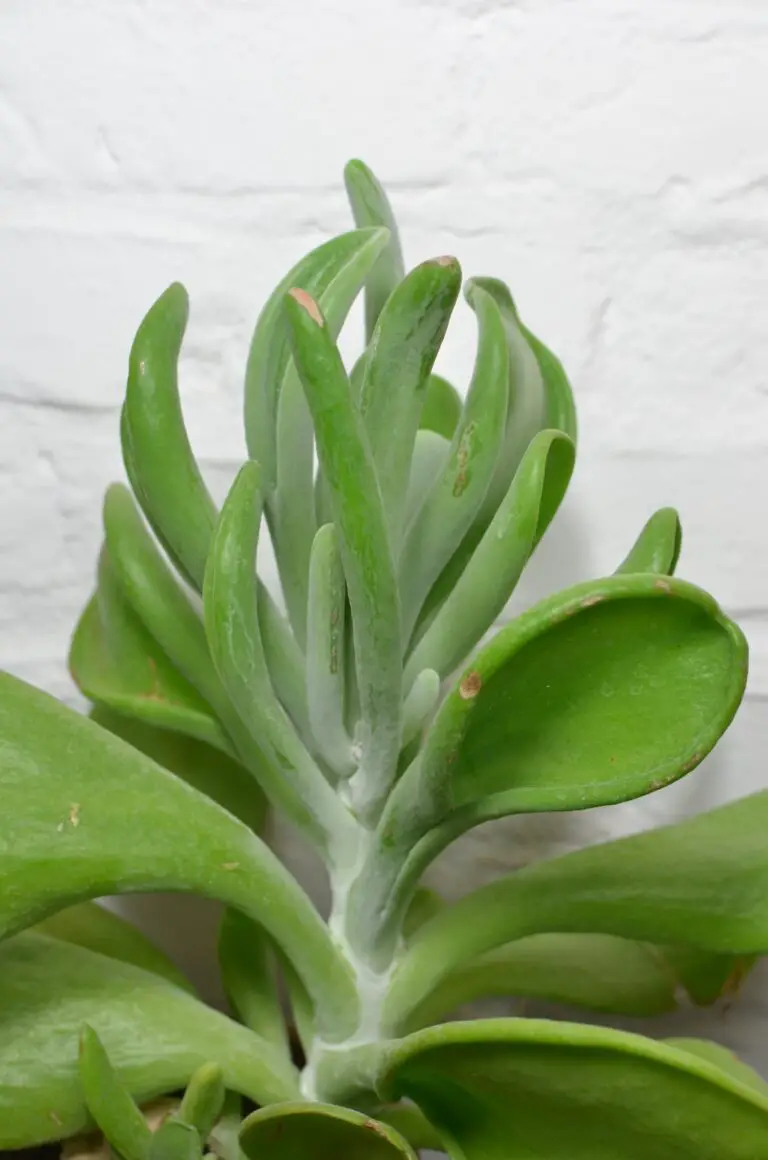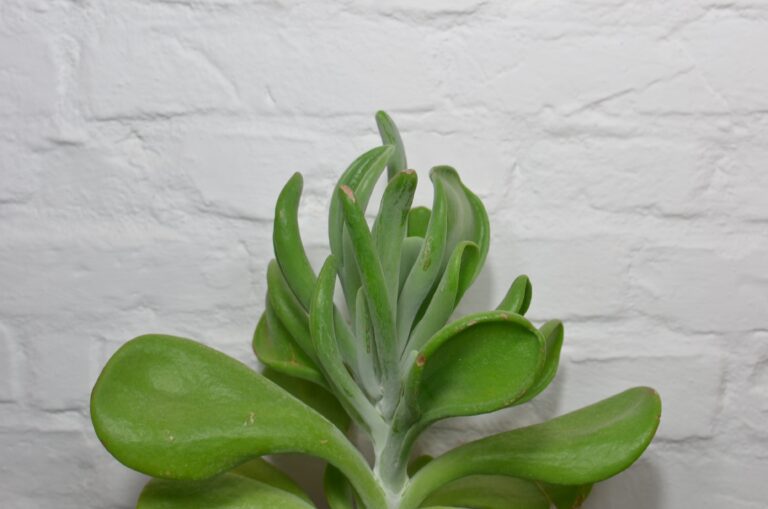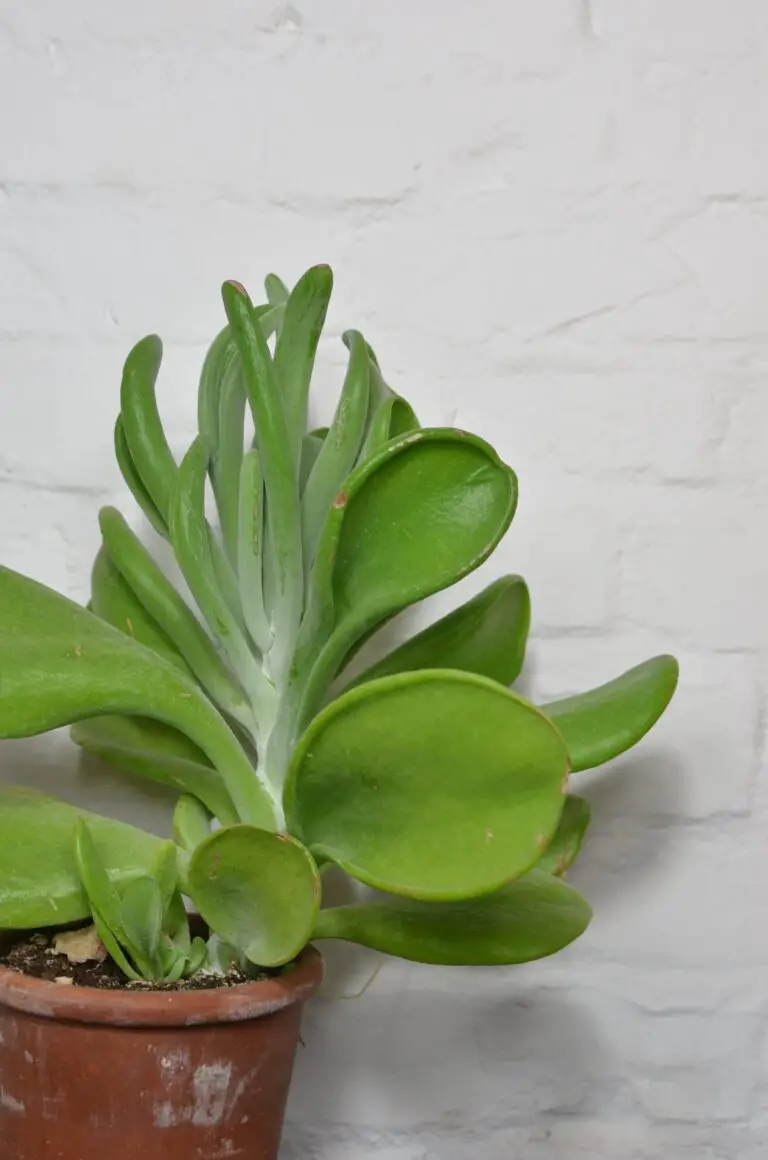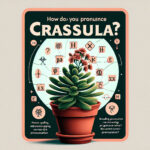Unlock the Mystery of Crassulaceae Pronunciation
Embarking on the quest to master botanical terms can feel like navigating through a labyrinth of Latin and Greek, where every phonetic twist and turn is crucial for accurate communication. This is no truer than for the richly diverse and globally dispersed Crassulaceae family. But why does it matter? In the world of botany, precision in pronunciation is not just a matter of pedantry; it’s the golden key to unlocking mutual understanding amongst plant enthusiasts, researchers, and horticulturists worldwide. After all, saying “Crass-yoo-LAY-see-ee” (Crassulaceae) just right can be as satisfying as a perfectly pruned bonsai.

Consider the magnificently adaptable Crassulaceae, which have carved out a niche in almost every nook and cranny of our planet. From the soaring heights of mountain ranges to the sun-soaked corners of urban gardens, these succulent species show a tenacity that’s as admirable as it is awe-inspiring. Echoing this adaptability, getting their pronunciation right ensures that we honor their rightful place in nature’s grand tapestry.
One quick way to wrap your head around the breath of the Crassulaceae family is by diving into the diverse tapestry of its species. From the chilly peaks where the robust Sedum shyly blooms to the arid expanse where the stout Echeveria thrives, the Crassulaceae have conquered terrains that other plants wouldn’t dare to tread. Their secret? An incredible array of forms and functions, all within the confines of a single family, united by their distinctive, moisture-retaining leaves and a penchant for survival.
For anyone eager to expand their botanical vocabulary and foster a deeper connection with the plant world, nailing the pronunciation of Crassulaceae is a triumph worth pursuing. To help you in this endeavor, why not explore an overview of the Crassulaceae family? Consider it your field guide as you navigate the verdant wilderness of plant taxonomy.
In our journey to demystify the pronunciation of Crassulaceae and other botanical terms, we gain not just linguistic precision but also a deeper appreciation for the astounding diversity that our green companions offer. So, as we continue to peel the layers of the botanic pronunciations onion, let’s celebrate every correctly articulated term as a small victory in our ongoing dialogue with nature.
The Root of Pronunciation: A Phonetic Breakdown
Ever stumbled upon a beautiful cluster of rosettes, thick leaves sprawled under the sun, and thought to yourself, “Ah, what splendid Crassulaceae!” only to realize that you’re not quite sure if your pronunciation hit the mark? Fear not, green thumbs and botany enthusiasts! Today, we’re diving headfirst into the world of plant taxonomy to demystify the pronunciation of this diverse family of plants.
Let’s get the basics down: Crassulaceae is pronounced as “krass-you-LAY-see-ee.” Break it down into syllables like a playful chant: krass (rhyming with ‘grass’), you (just as it is), LAY (like you’re about to lay down roots), and see-ee (as if you’re joyful to finally “see” these wonderful plants).

Now, let’s talk stress—syllable stress, that is. The emphasis falls heavily on the third syllable, LAY. Imagine you’re in your garden, and you accidentally stress the wrong part; instead of your plants growing tall, they just lay there, puzzled by your words. We wouldn’t want that, would we? So remember, it’s all about the LAY—put the stress there and watch your verbal skills bloom.
Common pitfalls include adding extra sounds or getting tangled in the suffixes. Some might say “crass-you-la-CEE,” but remember, this isn’t a symphony; our succulent friends prefer a softer touch. Others might stumble and add an extra ‘sh’ sound, turning it into “crass-you-LAY-shee.” Steer clear of these mispronunciations by practicing slowly and confidently.
For those of you who are visual learners or simply want a more in-depth approach, I highly recommend visiting this pronunciation guide. It’s an excellent resource for not only Crassulaceae but for mastering the botanical Latin that often wraps around our tongues like morning glory vines climbing a trellis.
Embrace these tips, and whether you’re casually conversing with fellow plant lovers or confidently explaining to someone that the jade plant on their windowsill belongs to the Crassulaceae family, your pronunciation will be as impeccable and impressive as your gardening skills. With practice, the correct pronunciation of ‘Crassulaceae’ will roll off your tongue as easily as water from a succulent’s leaf.
Origin of the Name ‘Crassulaceae’: A Historical Insight
Have you ever wondered about the roots of those tongue-twister plant names? Let’s dive deep into the historical soil and unearth the story behind the name Crassulaceae. This plant family name doesn’t just sound fancy; it’s steeped in history and meaning. Derived from the Latin word ‘crassus’, which means ‘thick’ or ‘fat’, it perfectly mirrors the plump, succulent leaves that are the hallmark of this plant family. Think of the wild Stonecrop, clinging to rocky ledges, its succulent leaves filled with life-giving water to tackle the harshest droughts – that’s survival, and that’s Crassulaceae.
Now, if you’re picturing these plants as the botanical equivalent to a camel’s water-storing hump, you’re on the right track. The name Crassulaceae essentially tips a hat to the plant’s robust, water-retaining characteristics, a trait that allows it to thrive in environments where most would wither away. Let’s consider the hardy Sedum Lime Zinger, a member of the Crassulaceae family. Its vivacious presence in your garden radiates more than just beauty; it’s a testament to the survival instinct embedded in its name.
But why stop at mere names? If a picture is worth a thousand words, then a video surely conveys infinitely more. To truly master the pronunciation and internalize the essence of Crassulaceae, lend your eyes and ears to this enlightening video:
As you wrap your tongue around the name, letting the syllables tumble out, you’re not just saying a word; you’re acknowledging centuries of botanical discovery and nomenclature. The name Crassulaceae is a nod to the plant’s robustness, a lexicon salute to its special place in the diverse tapestry of life. With every mention, you’re not just pronouncing a term; you’re invoking its rich, historical legacy.
“`html
Hearing it From the Experts: Audio and Video Resources
Ever found yourself tongue-tied trying to voice the word ‘Crassulaceae’? You’re not alone! This elegant botanical term has caused many a slip of the tongue in the world of plant enthusiasts. But fear not, help is at hand! Let’s delve into a trove of pronunciation resources that’ll have you sounding like a seasoned botanist in no time.
Picture this: You’re strolling through a garden, and a striking succulent catches your eye. A fellow plant lover asks about it, and you want to share your knowledge. But wait, how do you pronounce its family name? Well,  lucky for you, there are excellent audio guides that articulate Crassulaceae as crisply as a fresh leaf. These guides not only give you the right intonation but also offer little mnemonic tricks to make the term stick.
lucky for you, there are excellent audio guides that articulate Crassulaceae as crisply as a fresh leaf. These guides not only give you the right intonation but also offer little mnemonic tricks to make the term stick.
Not an audio learner? No problem! Get a visual on the pronunciation with engaging videos. Just like learning to tie your shoelaces, watching someone else do it can make all the difference. These pronunciation videos feature experts who break down the syllables and phonetics in a way that will have you exclaiming “Ah-ha! So that’s how it’s said!” quicker than a snapdragon’s snap.
And for those who yearn for a bit more context, how about an interview with a botanist? Imagine sitting down for tea with an expert, chatting about the quirks and histories behind plant names. These interviews can be a goldmine for pronunciation practice, filled with anecdotes that make remembering the right accentuation as easy as pie.
While the audio guides, videos, and expert interviews are superb for mastering Crassulaceae, there’s so much more to learn. Check out our encyclopedia for a wide array of audio guides on plant pronunciation that will turn you into a walking botanical lexicon!
“`
Practical Tips for Mastering Botanical Pronunciation
Let’s dive into the lush world of botany and get to grips with those intriguing plant names that are more often avoided than articulated. Yes, I’m looking at you, Crassulaceae! Fear not, I’ll guide you through some foolproof ways that will have you annunciating “Crassulaceae” as fluently as “sunflower.”
First things first, get familiar with the sounds. Botanical terms often have their roots in Latin or Greek, so understanding the common phonetic patterns of these languages can be a game-changer. Try to break down the word into bite-sized chunks – “Crass-u-lace-ae” – then repeat, repeat, and repeat. Your morning shower or daily commute can now double as a botanical speech practice session!
Next, leverage technology. There are magnificent apps and websites where you can hear expert pronunciations of even the most daunting botanical names. Pop in your earbuds and mimic the voices like a parrot learning human speech patterns. Some might even say it’s like having a vocal coach in your pocket!
Moving on, let’s bring in the visual aids. You know that dusty botanical dictionary you have lying around? It’s time to put it to use. Read along while listening to pronunciations and create vivid associations with the words. Visual learners rejoice, as this method helps in retaining those tricky names long-term.
If you’re a social butterfly, consider joining a local gardening club or online forum. Discussing and saying these terms in casual conversation can be immensely helpful. And don’t be embarrassed about mispronunciations; every botanist has been there. You’re likely to come across someone who’s also had their wrestling match with “Crassulaceae” and lived to tell the tale!
Finally, consistency is key. Don’t let those plant names intimidate you. By regularly practicing these pronunciation techniques, your confidence will bloom like a well-watered Sedum. And before you know it, “Crassulaceae” will roll off your tongue as effortlessly as any common garden variety.
Beyond ‘Crassulaceae’: Pronouncing Common Succulents
Welcome to the world of succulents, where the rolls off the tongue as smoothly as the petals of an Echeveria unfurl in the morning sun. While ‘Crassulaceae’ may have nestled comfortably in your botanical vocabulary, let’s take a stroll through the succulent garden and freshen up our pronunciation prowess with some of the family’s most cherished members.
First up is Sedum morganianum, affectionately dubbed the ‘Donkey’s Tail.’ Its cascading trails of teardrop-shaped leaves make it a darling in hanging baskets everywhere. Emphasize the ‘mor’ in ‘morganianum,’ as if you’re asking for “more” of its delightful presence. And the ‘ganianum’? Just pretend you’re ending the word with ‘anium,’ much like the clear ring of a bell!
Now, let yourself be seduced by the thick, paddle-like leaves of Kalanchoe thyrsiflora, known as the ‘Paddle Plant.’ For ‘Kalanchoe,’ let the ‘Kal’ flow easily, then add a pinch of zest with ‘an-CHO-ee’ – think of it as an ‘ancho’ chili spiced with an extra ‘e’!
The Wave of ‘Crassula’
As we venture further, the ‘Crassula’ itself awaits. With its various forms, from the plump ‘Jade Plant’ to the intricate ‘Watch Chain,’ ‘Crassula’ rolls out as ‘KRAS-yoo-la.’ Imagine it cushioning your tongue like the succulent’s own fleshy leaves.

Do you hear the whispers of ‘Echeveria’ in the air? These rosette-forming beauties beg to be pronounced with reverence. Start with ‘Ech,’ soft like the echo of footsteps in a greenhouse, followed by ‘eh-VARE-ee-uh’ – as if declaring “I’ve very much fallen for these plants!”
It’s not just the ‘Sempervivum’ that will ‘always live’ in pronunciation guides, but its name too! ‘Sem-per-VIV-um,’ with the liveliness of ‘vivacious,’ reminds us of its enduring nature, much like its ability to thrive in the rockiest of nooks.
In conclusion, whether it’s the rhythmic ‘Aloe’ that resonates like a timeless melody, or the poetic ‘Sedeveria’ that dances off the tongue, our foray beyond ‘Crassulaceae’ has uncovered that pronouncing the names of these succulent staples can be both lyrical and enlightening. So next time you’re admiring a succulent arrangement or conversing with fellow green thumbs, let your pronunciation reflect the same care and attention you lavish upon these botanical wonders.
Frequently Asked Questions
Ever stumbled upon the word ‘Crassulaceae’ and found yourself tangled in a phonetic knot? You’re not alone! Let’s untwist that knot together. Picture yourself at a fancy botany conference, and the term pops up—you want to sound like a pro, right? It’s simple when you break it down: KRASS-oo-LAY-see-ee.
But wait, there’s more! You’re at a plant nursery, eying those succulent beauties, and you hear someone mispronouncing ‘Crassulaceae’. Boom! You swoop in with your newfound pronunciation prowess and share a fun fact: it’s named after the plant’s characteristic thick leaves, which resemble ‘crassus,’ Latin for ‘thick’!
Gardening forums and botanical discussions are brimming with pronunciation mayhem. Seen people write it phonetically as ‘KRASS-yoo-luh-KEE-i’? You’re nodding, huh? We’ve all been there, scrolling through post after post. Imagine clearing the air with a voice note that transforms the chat from a cacophony to a chorus of correct ‘Crassulaceae’.
Now let’s put that knowledge into practice. Next time you’re watering your own green clan of Crassulaceae, whisper their name correctly and watch them perk up as if you’ve just unlocked a secret level of plant caregiver mastery.
Remember, whether you’re a botany enthusiast or a professional greenthumb, pronouncing ‘Crassulaceae’ should be as smooth as the leaves of a jade plant. So, go ahead, say it with confidence!




